Citric acid-based degradable polyester elastomers coated with silver nanowires for sustainable soft sensors
Abstract
Although soft electronic materials are of significant importance for flexible electronic devices, most of them are derived from commercial polymer elastomers, such as polydimethylsiloxane, polyurethane and Ecoflex. In this work, citric acid-based degradable polyester elastomers are prepared by a melt polycondensation process, utilizing citric acid, 1,8-octanediol and poly(ethylene glycol) (PEG) as monomers. Furthermore, poly(1,8-octanediol citrate acid) (POC)-PEG/silver nanowire (AgNW) conductive polyester elastomers (CPEs) are prepared by introducing a AgNW layer on the surface of the POC-PEG films. Scanning electron microscopy images reveal that the thickness of the AgNW layer is on the scale of several micrometers and the AgNWs form a continuous conductive network. Upon mechanical stimuli, POC-PEG exhibits recoverable deformation and induces variation in the AgNW conductive network, resulting in a conversion of strain to detectable resistance. When tensile strain is applied, the POC-PEG/AgNW CPEs achieve a gauge factor of 231.6, a response range of 0%-50%, a low response time of 35 ms and high stability. Moreover, the POC-10PEG/AgNW CPE also responds to bending deformation with a gauge factor of 3667.5, a response range of 0%-8.4%, a low response time of 62 ms and high stability. On the basis of strain sensitivity, wireless sensors are further assembled by integrating the POC-PEG/AgNW CPEs into a Bluetooth signal transmission system. Various human motions and physiological activities are successfully monitored using the wireless sensors. The results demonstrate that degradable citric acid-based polyester elastomers/AgNW CPEs are promising materials for next-generation sustainable and flexible electronic devices.
Keywords
INTRODUCTION
Soft electronic materials are of great significance for flexible electronic devices[1-6]; however, most of them are nanocomposites of commercial elastomers and conductive fillers. Commercial elastomers include polydimethylsiloxane (PDMS)[7-11], polyurethane (PU)[12,13] and Ecoflex[14,15], and conductive nanomaterials, such as metal and carbon nanomaterials, MXenes and liquid metals[16-21], are mainly utilized as conductive fillers. In such nanocomposites, the properties of commercial elastomers are difficult to control due to their fixed structures. Moreover, most elastomers have poor degradability and biocompatibility, which limits their applications in sustainable and bio-related electronic devices[22,23]. The development of high-performance soft electronic materials for next-generation sustainable and wearable devices is therefore a crucial research area.
Polyester elastomers represent a class of polymers containing abundant ester groups in polymer chains and possess a glass transition temperature (Tg) lower than room temperature. By tuning their structure, polyester elastomers can achieve comparable mechanical properties to that of most commercial elastomers, including strength, elongation at break and resilience. In particular, polyester elastomers have obvious advantages over other polymer elastomers (e.g., PDMS and PU) regarding degradability and biocompatibility, thereby making polyester elastomers soft and environmentally-friendly polymer materials[24-29]. Significant attention has been devoted to developing new polyester elastomers with high mechanical properties. For instance, polyester elastomers prepared from bis(β-lactone) and star-shaped hydroxyl-terminated poly(γ-methyl-ε-caprolactone) achieved a high breaking stress of 6 MPa, a Young’s modulus of 2 MPa and an elongation at break of 850%. Moreover, such polyester elastomers have the ability to degrade within 60 h at pH 7 and 40 °C[30]. Interestingly, Zhang and co-workers systematically investigated a series of polyester elastomers utilizing bio-monomers or bio-derived monomers. The tensile strength and elongation at break can be controlled in the ranges of 1.2-16.0 MPa and 70%-800%, respectively, and such polyester elastomers also show excellent biocompatibility and promising applications in in-vivo soft tissue repair[31-34]. However, there has still been less work on the use of polyester elastomers in soft electronics.
Citric acid is a low-cost organic acid that widely exists in fruits (such as lemon, citrus, pineapple and others) and animals (bones, muscles and blood). In addition, citric acid can also be synthesized by a fermentation procedure utilizing sugar-containing raw materials. Citric acid is non-toxic and has been extensively used as a food additive. From the perspective of chemical structure, one citric acid molecule contains three carboxyl groups and one hydroxyl group, which can react with other monomers containing hydroxyl, carboxyl and amino groups by a condensation process. Citric acid is an important monomer in the preparation of degradable polyester elastomers. The development of citric acid-based degradable polyester elastomers may provide new insights for the fabrication of sustainable and flexible soft electronic devices.
Herein, degradable citric acid-based conductive polyester elastomer (CPEs) are developed and used in constructing soft and wearable sensors. The degradable polyester elastomers are prepared by a melt polycondensation utilizing citric acid (CA), 1,8-octanediol and poly (ethylene glycol) (PEG) as monomers. Condensation polymerization of CA and 1,8-octanediol leads to the formation of poly(1,8-octanediol citrate) (POC). PEG is used as a flexible monomer to tune the mechanical properties. Silver nanowires (AgNW) is introduced on the surface of the POC-PEG films to make CA-based polyester elastomer/AgNW CPEs. The strain sensitivity of the POC-PEG/AgNW CPEs is investigated, and soft and wearable sensors are fabricated on their basis.
EXPERIMENTAL
Materials
CA (≥ 99.5%) was purchased from the Tianjin Damao Chemical Reagent Factory. 1,8-octanediol (98%), PEG (Mn = 2000) and phosphate-buffered saline (PBS) (pH 7.3) were supplied by Shanghai Aladdin Bio-Chem Technology Co., Ltd. AgNW was prepared according to a previously reported method[35].
Preparation of degradable POC-PEG polyester elastomers
The POC-PEG elastomers were synthesized by a melt polycondensation method and the detailed procedures were as follows. Under nitrogen protection and magnetic stirring, CA and 1,8-octanediol (molar ratio of 1.1:1) were added to a three-necked flask and heated to 140 °C to obtain a melt. PEG with different mass fractions was then added to the above melt and stirred to form a homogeneous solution. The polymerization was conducted at 140 °C for 0.5 h to obtain a viscous prepolymer mixture that was poured into a Teflon mold. The polymerization was further conducted at 80 °C for 72 h to obtain the target POC-PEG elastomers. By adjusting the mass fraction of PEG (0, 10 and 20 wt.%), different polyester elastomers (POC, POC-10PEG and POC-20PEG) were obtained.
Preparation of POC-PEG/AgNW CPEs
POC-PEG/AgNW CPEs were prepared as follows. A AgNW dispersion in ethanol (1 mg mL-1) was prepared with the assistance of ultrasound and then introduced onto the surface of the POC-PEG films by a droplet coating procedure. The thickness of the AgNW layer was controlled by the coating time.
Fabrication of flexible strain sensors using POC-PEG/AgNW CPEs
Flexible strain sensors were fabricated as follows. The POC-10PEG CPE was tailored into dimensions of
Characterization
Fourier transform infrared (FT-IR) spectra were collected on a Nicolet IS50 FT-IR spectrometer. The samples were coated on potassium bromide salt sheets and the scanning range was 400-4000 cm-1.
The ultraviolet-visible (UV-Vis) spectra of the AgNW were collected on a Shimadzu UV-2550. AgNW was dispersed in ethanol and the concentration was 0.01 mg mL-1. The scanning range was 200-800 nm. The surface and fracture morphology of the AgNW and POC-PEG/AgNW CPEs were observed using scanning electron microscopy (SEM, VEGA II XMU). The samples were sputtered with gold in a vacuum prior to observation.
Thermogravimetric analysis (TGA) was performed on a thermogravimetric analyzer (METTLER TOLEDO TGA/DSC) with a nitrogen flow of 50 mL min-1. The weight loss of the sample was recorded by heating the sample from 25 to 600 °C at a heating rate of 10 °C min-1.
The glass transition temperature (Tg) was obtained from differential scanning calorimetry (DSC) curves of the polyester elastomers. The DSC curves were collected on a differential scanning calorimeter (METTLER TOLEDO DSC823e) under a N2 atmosphere. The heating rate was 10 °C min-1 and the scanning range was -50-150 °C.
The stress-strain curves and tensile load-unload curves of the polyester elastomers were recorded on a universal testing machine (CMT2500). The sample size was 75 mm × 4 mm × 2 mm and the stretching speed was 20 mm min-1. The elastic modulus (E) of the POC-PEG elastomers was obtained from the slope of the stress-strain curve in the strain range of 0%-25% according to E = Δσ/Δε, in which σ and ε are stress and strain, respectively.
For the degradability test, a piece of POC-PEG/AgNW CPE was immersed in a PBS solution or 0.1 mol L-1 NaOH aqueous solution at room temperature. Morphological changes were recorded by taking photographs at different time intervals. The gel permeation chromatography curves of the polyester elastomer prepolymer and POC-PEG/AgNW CPEs after being degraded in a 0.1 mol L-1 NaOH aqueous solution for 10 d were collected to evaluate the degradability.
The strain sensitivity, sensing stability, response time and resistive response to different strains were evaluated by recording the resistance change of the POC-PEG/AgNW CPEs under different applied strains. The sensors were fixed on a homemade electromotor reciprocating device and the strain was applied in different modes. During cyclic deformation, the resistance change was recorded by a digital bridge (LCR, UC2858A) [Supplementary Figure 1] equipped with a computer. The relative resistance change (ΔR/R0) was calculated according to ΔR/R0 = (Ri - R0)/R0, where R0 and Ri represent the initial resistance of the POC-PEG/AgNW CPE and resistance under an applied strain, respectively.
RESULTS AND DISCUSSION
Preparation and properties of POC-PEG/AgNW CPEs
The degradable POC-PEG polyester elastomers were prepared according to the synthetic route shown in Figure 1A. The POC-PEG elastomers were prepared based on a polycondensation process. CA was selected as the carboxyl group-containing monomer. Because the CA molecule has three carboxyl groups and one hydroxyl group, it also works as a crosslinker to bond polyester chains together. The preparation of the POC-PEG elastomers was conducted via a two-stage process of prepolymerization and post-polymerization and the feeding ratio of PEG was adjusted to prepare POC-PEG elastomers with different chemical structures. Figure 1B shows the FT-IR spectra of the monomers and POC-PEG elastomers. For POC,
Figure 1. (A) Synthetic route for POC-PEG degradable polyester elastomers. (B) FT-IR spectra of monomers and POC-PEG elastomers with different PEG contents. (C) Enlarged infrared spectra of highlighted section in (B).
The glass transition temperature (Tg) of the POC-PEG elastomers was obtained from the DSC curves. As shown in Figure 2A, all the samples, including POC, POC-10PEG and POC-20PEG, exhibit an obvious glass transition. Because the Tg values are all below room temperature, POC, POC-10PEG and POC-20PEG are in their highly elastic state. With an increase in PEG content from 0 to 20 wt.%, Tg decreases from 1.3 to -17.4 °C, indicating that PEG works as a soft segment in POC-PEG elastomers. In addition, PEG has a relatively long molecular chain compared with other small monomers. The crosslinking density of elastomers is lowered when the PEG content is increased, which also helps to promote the chain segment motion of polymers and leads to decreased Tg.
Figure 2. Thermodynamic and mechanical properties of POC-PEG elastomers. (A) DSC curves of POC, POC-10PEG and POC-20PEG elastomers. (B) TG curves. (C) stress-strain curves. (D) modulus and elongation at break of POC-PEG elastomers prepared for different contents of PEG. (E) tensile loading-unloading curves of POC-10PEG elastomer. (F) tensile loading-unloading curves of POC-20PEG elastomer.
Figure 2B shows the TG curves of POC, POC-10PEG and POC-20PEG. As seen, POC, POC-10PEG and POC-20PEG show good thermal stability below 210 °C. Between 210 and 500 °C the elastomers exhibit an obvious weight loss. There are two weight loss stages at 210-300 and 300-550 °C, respectively. At
Because of the low Tg, the POC-PEG elastomers exhibit excellent elasticity and stretchability. POC,
Figure 2E and F show the cyclic load-unload curves of POC-10PEG and POC-20PEG, respectively. Hysteresis loops are observed for both POC-10PEG and POC-20PEG, and the residual strains in the first load-unload curve for POC-10PEG and POC-20PEG are 4.5% and 9.6%, respectively. In the subsequent cycles, the load-unload curves almost overlap and the residual strains remain unchanged with increasing load-unload cycles. The integrated mechanical properties endow POC-PEG polyester elastomers with potential soft materials for flexible devices.
The POC-PEG/AgNW CPEs were prepared by introducing a AgNW layer on the surface of POC-10PEG films, according to the procedures illustrated in Figure 3A. AgNW was first prepared according to a previously reported method[35]. From the SEM and TEM images displayed in Figure 3B and C, the prepared AgNW has a wire shape and their diameter is ~50 nm. Figure 3D shows the UV-Vis spectrum of the AgNW dispersion. As seen, the absorption peak at 380 nm was observed, further indicating the successful preparation of AgNWs[38]. The AgNW layer was introduced onto the surface of the POC-PEG elastomer film by a droplet coating procedure. The thickness of the coated AgNW layer was adjusted by the coating time. As displayed in Figure 3E-G, the thickness of the AgNW layer is in the range of 1.3-4.4 μm. From the surface morphology of the POC-PEG/AgNW CPEs displayed in Figure 3H-J, the AgNW randomly stack and interlace to form a continuous network.
Figure 3. Preparation and characterization of POC-PEG/AgNW CPEs. (A) Illustration of preparation of POC-PEG/AgNW CPEs. (B) SEM image of AgNW. (C) TEM image of a single AgNW. (D) UV-Vis spectra of AgNW dispersed in ethanol (0.01 mg mL-1). (E-G) SEM images of cross sections of POC-PEG/AgNW CPEs with different AgNW layer thicknesses. (H-J) SEM images of surface morphology of POC-PEG/AgNW CPEs with different AgNW layer thicknesses.
Tensile strain sensitivity of POC-PEG/AgNW CPEs
The POC-PEG/AgNW CPEs inherit the mechanical flexibility of the POC-PEG elastomers and exhibit conductivity due to the AgNW layer. Upon deformation, the AgNW network changes accordingly and the POC-PEG/AgNW CPEs show excellent tensile strain sensitivity. The sensing mechanism of the
Figure 4. Tensile strain sensitivity of POC-PEG/AgNW CPEs. (A) Schematic illustration of strain sensing mechanism of POC-PEG/AgNW CPEs. (B) Resistance response of POC-PEG/AgNW CPEs to increasing strain from 0 to 50%. (C) Linear fitting of ΔR/R0-strain curve. (D) Resistance response of POC-PEG/AgNW CPEs to cyclic strain of 25% over 800 cycles. (E) Response time of POC-PEG/AgNW CPEs to transient strain. (F) Resistance response of POC-PEG/AgNW CPEs to different strains of 10%, 25% and 50%. (G) Strain sensitivity of POC-PEG/AgNW CPEs containing AgNW layers with different thicknesses.
There are three linear regions for the relative resistance change with increasing strain, which may be induced by the gradual destruction of the AgNW layer. When the AgNW layer is subjected to a tensile strain in the range of 0%-15% [Supplementary Figure 2], slippage between the AgNW occurs and the resistance slightly increases. With a further increase in strain, more and more cracks form because of the slippage between AgNW and the resistance changes obviously with increasing strain.
In addition, the POC-PEG/AgNW CPEs also respond reversibly to periodical strain for more than 800 cycles [Figure 4D]. From the insets of Figure 4E, the response is stable and the amplitude of ΔR/R0 is almost the same. The response time can be as low as 35 ms [Figure 4E], which ensures the fast detection of strain. Figure 4F shows the resistance response of a POC-PEG/AgNW CPE under different strains. As seen, the POC-PEG/AgNW CPE responds efficiently to cyclic strains of 10%, 25% and 50%.
Further investigations indicate that the tensile strain sensitivity of the POC-PEG/AgNW CPEs is dependent on the thickness of the AgNW layer [Figure 4G]. There is a general tendency that the GF decreases with increasing AgNW layer thickness. In the case of a AgNW layer thickness of 1.3 μm, the GF reaches 58.1 and 236.6 in the strain ranges of 0%-10% and 10%-25%, respectively. Under low strain loading, the conductive network is less affected by deformation, while under high strain loading, the conductive network undergoes a drastic variation and the GF is relatively high. In the case of a thin AgNW layer, the conductive network can easily change along with the POC-PEG elastomers and is sensitive to deformation. In contrast, for an elevated thickness, the robustness of the conductive network is enhanced and the sensitivity is lowered. This provides an opportunity to tune the strain sensitivity of the POC-PEG/AgNW CPEs by regulating the thickness of the AgNW layer.
Bending strain sensitivity of POC-PEG/AgNW CPEs
Similar to the resistance response of the POC-PEG/AgNW CPEs to tensile strain, bending strain also induces a variation in the AgNW conductive network that leads to resistance variation [Figure 5A]. With increasing bending strain, the resistance of the POC-PEG/AgNW CPEs increases gradually. When the bending strain is kept constant, ΔR/R0 maintains constant and a step-like response curve is recorded, indicating the stability of the POC-PEG/AgNW CPEs during the bending strain response [Figure 5B]. The GF is calculated according to GF = (ΔR/R0)/Δε, where ε is calculated according to ε = h/2r (h is the thickness of the material and r is the radius of curvature)[43,44]. Figure 5C shows the linear fitting of the ΔR/R0-strain curve, with two GFs obtained: GF1 = 316.4 in the strain range of 0%-6.7%; GF2 = 3667.5 in the strain range of 6.7%-8.4%. The POC-PEG/AgNW CPEs also efficiently respond to cyclic bending strain over 300 cycles
Figure 5. Bending strain sensitivity of POC-PEG/AgNW CPEs. (A) Schematic illustration of bending strain sensing mechanism of
The strain sensitivity of the POC-PEG/AgNW CPEs is closely related to the thickness of the AgNW layer and sensing range [Figure 5F]. With fixed a AgNW layer thickness, the GF in the low bending strain range (0%-6.7%) is lower than that in the high bending strain range (6.7%-8.4%). In the case of a AgNW layer thickness of 1.3 μm, the GF reaches 42.6 and 499.4 in the strain ranges of 0%-6.7% and 6.7%-8.4%, respectively. Under a low bending strain loading, the AgNW conductive network is less affected and the GF is relatively low, while when a high bending strain is applied, the AgNW conductive network undergoes a drastic variation and the GF is high. When the AgNW layer thickness is increased, the GF decreases. The GF variation tendency with increasing AgNW layer thickness is opposite to that observed in the tensile strain response process. A possible reason for the decreasing GF with increasing AgNW layer thickness is as follows. When the thickness of the AgNW conductive layer is increased, a fluffy layer of AgNWs is obtained. Bending of the POC-PEG/AgNW CPEs induces full contact of the AgNWs and the high sensitivity of the CPEs to bending strain.
Wearable sensors based on POC-PEG/AgNW CPEs
On the basis of the high sensitivity of the POC-PEG/AgNW CPEs to tensile and bending strain, wearable and wireless strain sensors are further assembled by connecting flexible sensors to our previously established Bluetooth signal transmission system[36,37]. Utilizing such sensors, various human motions and physiological activities were monitored. By mounting a sensor on a finger, joint bending was monitored by the resistance variation [Figure 6A and Supplementary Video 1]. Bending of the finger joint leads to an increase in resistance, while the resistance decreases when the finger joint is unbent. Different bending angles could be reflected by the amplitude of the resistance variation. In a similar manner, wrist, elbow and knee bending were also successfully detected [Figure 6B-D and Supplementary Video 2].
Figure 6. Wearable and wireless strain sensors of POC-PEG/AgNW CPEs for human motion monitoring. (A) Resistance response of sensor to joint bending. (B) Wrist bending. (C) Elbow bending. (D) Knee bending during walking. (E) Tendon motion caused by fist clenching. (F) The movement of prominentia laryngea induced by swallowing.
Due to the high strain sensitivity of the POC-PEG/AgNW CPEs, such sensors also have the ability to monitor small activities. Figure 6E shows the resistance response of the sensor to the tendon motion caused by fist clenching. As seen, periodical fist clenching induced an obvious resistance response and the tendon motion was monitored. Furthermore, by fixing a sensor near the prominentia laryngea, swallowing was also monitored by recording the resistance response induced by prominentia laryngeal motion [Figure 6F]. These results demonstrate that the POC-PEG/AgNW CPEs could be utilized in the construction of wearable and wireless sensors for both large strains induced by joint bending and small strains induced by physiological activities.
Degradability of POC-PEG/AgNW CPEs
The degradability of the POC-PEG/AgNW CPEs under different conditions was further evaluated. As shown in Figure 7A, the citric acid-based CPEs were degradable because of the cleavage of the ester bond in the polymer chain. Figure 7B and C display photographs of a POC-PEG/AgNW CPE soaked in a PBS buffer (pH 7.3) and a 0.1 mol L-1 NaOH aqueous solution, respectively. As seen, the POC-PEG/AgNW CPE continuously swells for 0-2 months and then begins to gradually degrade in 2-5 months, exhibiting a slow degradation rate. In contrast, when the POC-PEG/AgNW CPE was soaked in a 0.1 mol L-1 NaOH aqueous solution, the CPE sheet almost disappeared within only 6 h, indicating its degradation ability.
Figure 7. Degradability test of POC-PEG/AgNW CPEs. (A) Schematic diagram of hydrolytic degradation of citric acid-based CPEs.
To gain insights into the degradation behavior, gel permeation chromatography curves of the polyester elastomer prepolymer and POC-PEG/AgNW CPE after being degraded in a 0.1 mol L-1 NaOH aqueous solution for 10 d were collected. Figure 7D and E show the flow curve and molecular weight distribution curve of the prepolymer of the citric acid-based polyester elastomer, respectively. The weight average molecular weight (Mw) of the sample is Mw = 4298 g mol-1. For the sample after degradation, Mw for most of the polymers decreased to 467 g mol-1 [Figure 7F]. According to the molecular weight distribution curve in Figure 7G, the contents of the low and high molecular weight polymers are 72.4% and 27.6%, respectively. This means that most of the citric acid-based CPEs have been degraded via breakage of the polymer chain. This demonstrates that such POC-PEG/AgNW CPEs have the ability to degrade and could be used as key materials for green electronic devices.
CONCLUSIONS
In conclusion, degradable citric acid-based conductive polyester elastomers have been prepared by coating a silver nanowire layer on the surface of polyester elastomer films. The tensile strength, elongation at break and modulus of the polyester elastomers were found to be closely related to the feeding content of poly(ethylene glycol) during the melt polycondensation process. The excellent response ability of the conductive polyester elastomers to both tensile and bending strain and the strain sensitivity could be regulated by the thickness of the silver nanowire layer. On the basis of strain sensitivity, the conductive polyester elastomers were utilized as key sensitive materials for wearable and wireless sensors for the monitoring of various human motions and physiological activities. Degradability testing indicated that the conductive polyester elastomers have outstanding degradation ability in both neutral conditions and alkaline conditions. Overall, this work not only presents novel flexible electronic materials for further soft and wearable sensors but also provides an opportunity to develop sustainable electronics using degradable materials.
DECLARATIONS
AcknowledgmentsThe authors are thankful for the financial support from the National Natural Science Foundation of China (No. 51603164), the Natural Science Foundation of Shaanxi Province (No. 2019JM-124), the Natural Science Foundation of Shaanxi Provincial Department of Education (No. 20JS062), the Innovative Talents Promotion Plan-Young Science and Technology Star Project (No. 2021KJXX-42), and the Young Talent Fund of the University Association for Science and Technology in Shaanxi, China (No. 20170706).
Authors’ contributionsMethodology, investigation, writing - original draft: Wang Z
Supervision, project administration: Zhou H
Writing - review & editing: Zhou H, Zhang H, Zhang G
Data curation, formal analysis: Zheng B
Methodology, investigation: Gao Y
Supervision, validation, methodology: Jin X, Ma A
Availability of data and materialsNot applicable.
Financial support and sponsorshipThis work was supported by National Natural Science Foundation of China (No. 51603164), the Natural Science Foundation of Shaanxi Province (No. 2019JM-124), the Natural Science Foundation of Shaanxi Provincial Department of Education (No. 20JS062), the Innovative Talents Promotion Plan-Young Science and Technology Star Project (No. 2021KJXX-42), Outstanding Young Talents in Colleges and Universities of Shaanxi Province and the Young Talent Fund of the University Association for Science and Technology in Shaanxi, China (No. 20170706).
Conflicts of interestAll authors declared that there are no conflicts of interest.
Ethical approval and consent to participateNot applicable.
Consent for publicationNot applicable.
Copyright© The Author(s) 2022.
Supplementary MaterialsREFERENCES
1. Patel S, Ershad F, Zhao M, et al. Wearable electronics for skin wound monitoring and healing. Soft Sci 2022;2:9.
2. Chen J, Zhu Y, Chang X, et al. Recent progress in essential functions of soft electronic skin. Adv Funct Mater 2021;31:2104686.
3. Zhu J, Zhou C, Zhang M. Recent progress in flexible tactile sensor systems: from design to application. Soft Sci 2021;1:3.
4. Vallem V, Sargolzaeiaval Y, Ozturk M, Lai YC, Dickey MD. Energy harvesting and storage with soft and stretchable materials. Adv Mater 2021;33:e2004832.
5. Yu J, Zhang K, Deng Y. Recent progress in pressure and temperature tactile sensors: principle, classification, integration and outlook. Soft Sci 2021;1:6.
6. Gui Q, He Y, Wang Y. Soft electronics based on liquid conductors. Adv Electron Mater 2021;7:2000780.
7. Wolf MP, Salieb-beugelaar GB, Hunziker P. PDMS with designer functionalities-properties, modifications strategies, and applications. Progr Polym Sci 2018;83:97-134.
8. Qi D, Zhang K, Tian G, Jiang B, Huang Y. Stretchable electronics based on PDMS substrates. Adv Mater 2021;33:e2003155.
9. Zhang K, Shi X, Chen J, Xiong T, Jiang B, Huang Y. Self-healing and stretchable PDMS-based bifunctional sensor enabled by synergistic dynamic interactions. Chem Eng J 2021;412:128734.
10. Yang Y, Cao Z, He P, Shi L, Sun J. Ti3C2Tx MXene-graphene composite films for wearable strain sensors featured with high sensitivity and large range of linear response. Nano Energy 2019;66:104134.
11. Cai Y, Zhang X, Wang G, et al. A flexible ultra-sensitive triboelectric tactile sensor of wrinkled PDMS/MXene composite films for E-skin. Nano Energy 2021;81:105663.
12. Wei Q, Chen G, Pan H, et al. MXene-sponge based high-performance piezoresistive sensor for wearable biomonitoring and real-time tactile sensing. Small Methods 2022;6:e2101051.
13. Zhou Y, Zhan P, Ren M, et al. Significant stretchability enhancement of a crack-based strain sensor combined with high sensitivity and superior durability for motion monitoring. ACS Appl Mater Interfaces 2019;11:7405-14.
14. Zhang Y, Zhu X, Liu Y, et al. Ultra-stretchable monofilament flexible sensor with low hysteresis and linearity based on MWCNTs/Ecoflex composite materials. Macro Mater Eng 2021;306:2100113.
15. Yue X, Yang J, Gao J, et al. Wearable hydroxylated MWCNTs/ecoflex composite strain sensor with high comprehensive performance based on electron irradiation. Compos Sci Technol 2022;226:109537.
16. Wang Y, Yokota T, Someya T. Electrospun nanofiber-based soft electronics. NPG Asia Mater 2021;13:22.
17. Cho KW, Sunwoo SH, Hong YJ, et al. Soft bioelectronics based on nanomaterials. Chem Rev 2022;122:5068-143.
18. Lyu Q, Gong S, Yin J, Dyson JM, Cheng W. Soft wearable healthcare materials and devices. Adv Healthc Mater 2021;10:e2100577.
19. Kim MG, Brown DK, Brand O. Nanofabrication for all-soft and high-density electronic devices based on liquid metal. Nat Commun 2020;11:1002.
20. Peng S, Yu Y, Wu S, Wang CH. Conductive polymer nanocomposites for stretchable electronics: material selection, design, and applications. ACS Appl Mater Interfaces 2021;13:43831-54.
21. Mclellan K, Yoon Y, Leung SN, Ko SH. Recent progress in transparent conductors based on nanomaterials: advancements and challenges. Adv Mater Technol 2020;5:1900939.
22. Wang C, Wang C, Huang Z, Xu S. Materials and structures toward soft electronics. Adv Mater 2018;30:e1801368.
23. Chiong JA, Tran H, Lin Y, Zheng Y, Bao Z. Integrating emerging polymer chemistries for the advancement of recyclable, biodegradable, and biocompatible electronics. Adv Sci (Weinh) 2021;8:e2101233.
24. Zhang Q, Song M, Xu Y, Wang W, Wang Z, Zhang L. Bio-based polyesters: recent progress and future prospects. Progress in Polymer Science 2021;120:101430.
25. Davenport Huyer L, Bannerman AD, Wang Y, et al. One-pot synthesis of unsaturated polyester bioelastomer with controllable material curing for microscale designs. Adv Healthc Mater 2019;8:e1900245.
26. Chen CJ, Huang BW, Tseng PJ, et al. Low-mass liquid crystalline materials blended in recycled thermoplastic polyester elastomer for corrosion inhibitor application. Polymers (Basel) 2021;13:3188.
27. Satti SM, Shah AA. Polyester-based biodegradable plastics: an approach towards sustainable development. Lett Appl Microbiol 2020;70:413-30.
28. Tang S, Li J, Wang R, et al. Current trends in bio-based elastomer materials. SusMat 2022;2:2-33.
29. Siehr A, Flory C, Callaway T, Schumacher RJ, Siegel RA, Shen W. Implantable and degradable thermoplastic elastomer. ACS Biomater Sci Eng 2021;7:5598-610.
30. De Hoe GX, Zumstein MT, Tiegs BJ, et al. Sustainable polyester elastomers from lactones: synthesis, properties, and enzymatic hydrolyzability. J Am Chem Soc 2018;140:963-73.
31. Wang D, Tang Z, Wang Z, Zhang L, Guo B. A bio-based, robust and recyclable thermoset polyester elastomer by using an inverse vulcanised polysulfide as a crosslinker. Polym Chem 2022;13:485-91.
32. Wei T, Lei L, Kang H, et al. Tough Bio-based elastomer nanocomposites with high performance for engineering applications. Adv Eng Mater 2012;14:112-8.
33. Kang H, Li X, Xue J, et al. Preparation and characterization of high strength and noncytotoxic bioelastomers containing isosorbide. RSC Adv 2014;4:19462.
34. Gao Y, Xue J, Zhang L, Wang Z. Synthesis of bio-based polyester elastomers and evaluation of their in vivo biocompatibility and biodegradability as biomedical materials. Biomater Sci 2022;10:3924-34.
35. Li B, Ye S, Stewart IE, Alvarez S, Wiley BJ. Synthesis and purification of silver nanowires to make conducting films with a transmittance of 99%. Nano Lett 2015;15:6722-6.
36. Zhou H, Lai J, Jin X, et al. Intrinsically adhesive, highly sensitive and temperature tolerant flexible sensors based on double network organohydrogels. Chem Eng J 2021;413:127544.
37. Zhou H, Lai J, Zheng B, et al. From glutinous-rice-inspired adhesive organohydrogels to flexible electronic devices toward wearable sensing, power supply, and energy storage. Adv Funct Materials 2022;32:2108423.
38. Chang MH, Cho HA, Kim YS, Lee EJ, Kim JY. Thin and long silver nanowires self-assembled in ionic liquids as a soft template: electrical and optical properties. Nanoscale Res Lett 2014;9:330.
39. Peng Y, Zhao L, Yang C, et al. Super tough and strong self-healing elastomers based on polyampholytes. J Mater Chem A 2018;6:19066-74.
40. Yiming B, Han Y, Han Z, et al. A mechanically robust and versatile liquid-free ionic conductive elastomer. Adv Mater 2021;33:e2006111.
41. Lu C, Wang C, Wang J, Yong Q, Chu F. Integration of hydrogen bonding interaction and Schiff-base chemistry toward self-healing, anti-freezing, and conductive elastomer. Chem Eng J 2021;425:130652.
42. Wang M, Lai Z, Jin X, Sun T, Liu H, Qi H. Multifunctional liquid-free ionic conductive elastomer fabricated by liquid metal induced polymerization. Adv Funct Mater 2021;31:2101957.
43. Sun H, Dai K, Zhai W, et al. A highly sensitive and stretchable yarn strain sensor for human motion tracking utilizing a wrinkle-assisted crack structure. ACS Appl Mater Interfaces 2019;11:36052-62.
Cite This Article
Export citation file: BibTeX | RIS
OAE Style
Wang Z, Zhou H, Zheng B, Gao Y, Zhang H, Jin X, Zhang G, Ma A. Citric acid-based degradable polyester elastomers coated with silver nanowires for sustainable soft sensors. Soft Sci 2022;2:16. http://dx.doi.org/10.20517/ss.2022.14
AMA Style
Wang Z, Zhou H, Zheng B, Gao Y, Zhang H, Jin X, Zhang G, Ma A. Citric acid-based degradable polyester elastomers coated with silver nanowires for sustainable soft sensors. Soft Science. 2022; 2(4): 16. http://dx.doi.org/10.20517/ss.2022.14
Chicago/Turabian Style
Wang, Zhao, Hongwei Zhou, Bohui Zheng, Yang Gao, Hongli Zhang, Xilang Jin, Gai Zhang, Aijie Ma. 2022. "Citric acid-based degradable polyester elastomers coated with silver nanowires for sustainable soft sensors" Soft Science. 2, no.4: 16. http://dx.doi.org/10.20517/ss.2022.14
ACS Style
Wang, Z.; Zhou H.; Zheng B.; Gao Y.; Zhang H.; Jin X.; Zhang G.; Ma A. Citric acid-based degradable polyester elastomers coated with silver nanowires for sustainable soft sensors. Soft. Sci. 2022, 2, 16. http://dx.doi.org/10.20517/ss.2022.14
About This Article
Copyright
Data & Comments
Data
 Cite This Article 21 clicks
Cite This Article 21 clicks


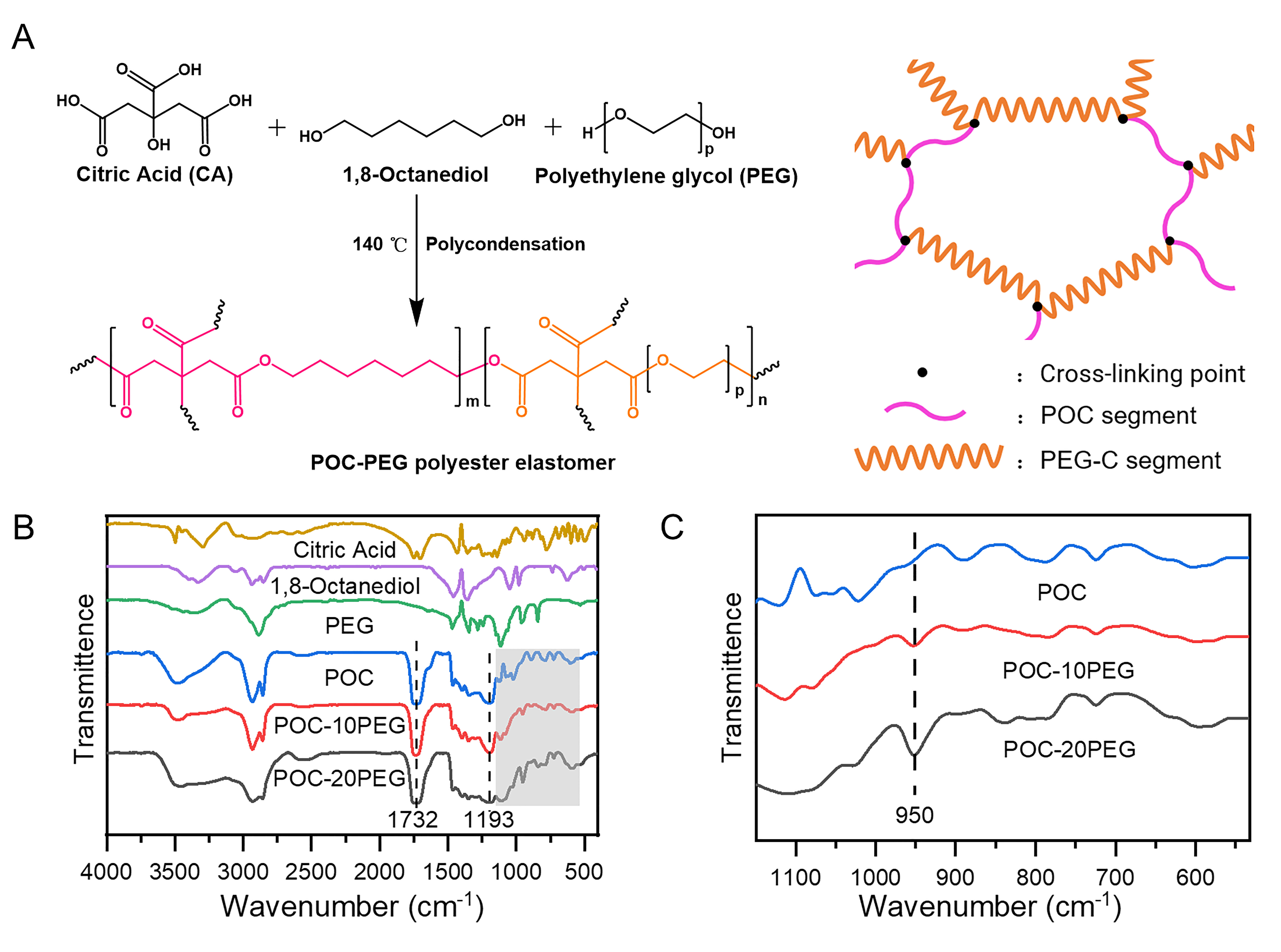

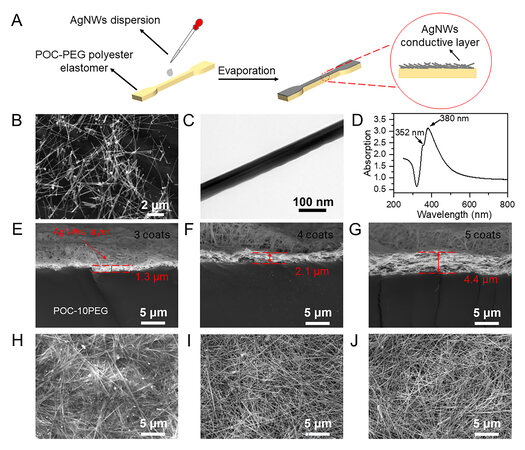
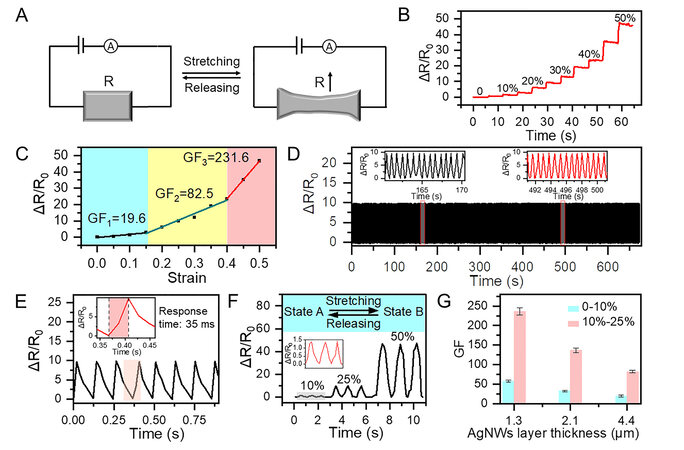
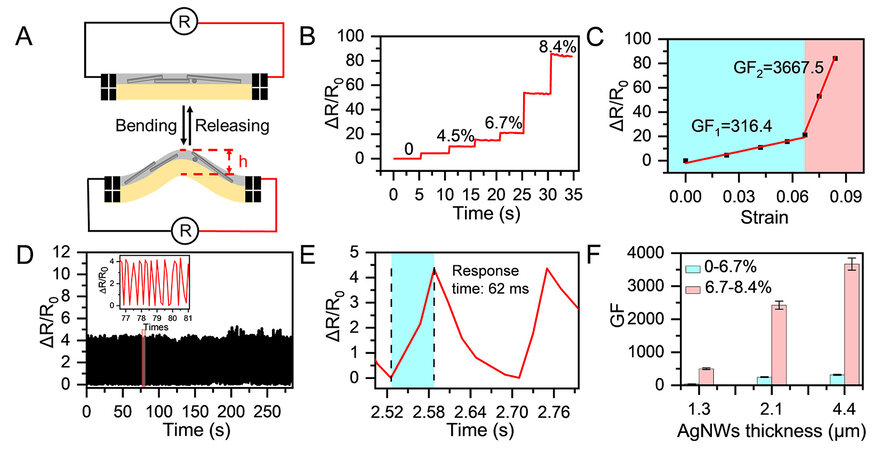
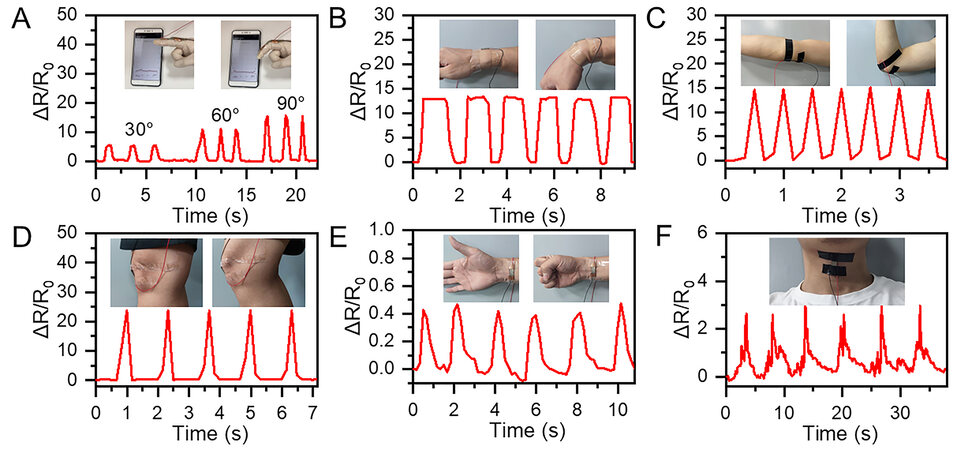
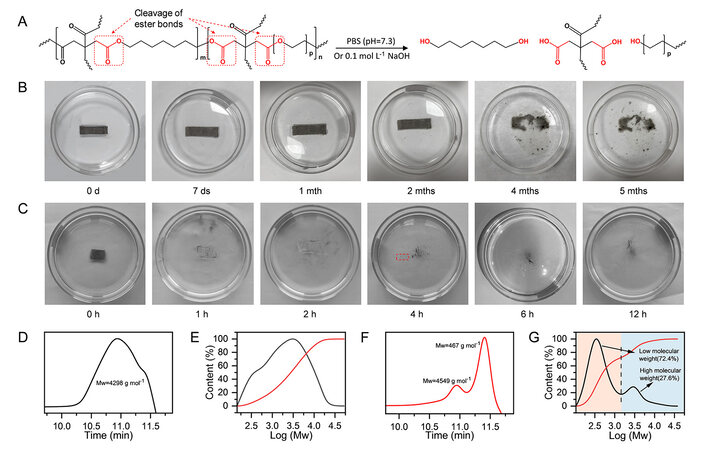











Comments
Comments must be written in English. Spam, offensive content, impersonation, and private information will not be permitted. If any comment is reported and identified as inappropriate content by OAE staff, the comment will be removed without notice. If you have any queries or need any help, please contact us at support@oaepublish.com.